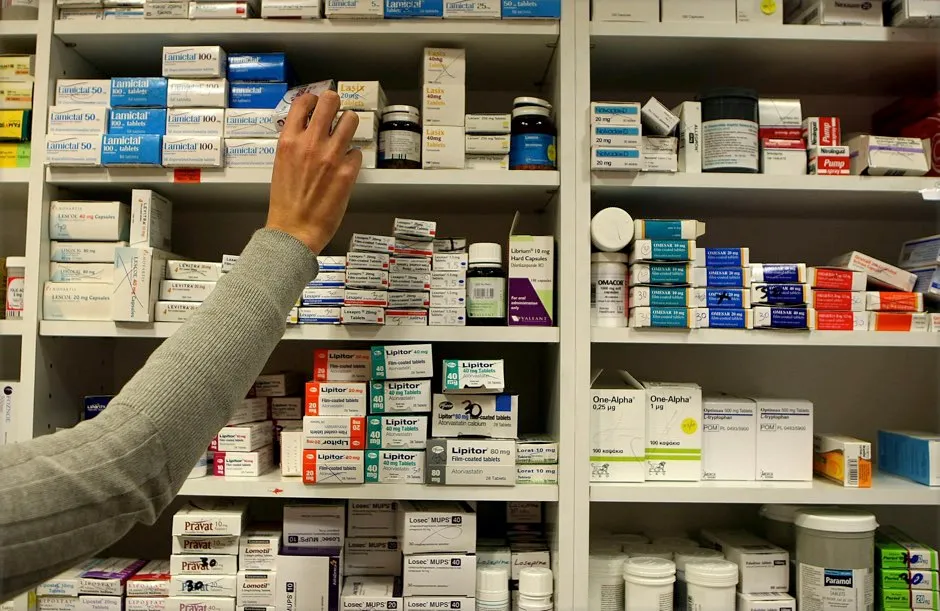Avoidable medication errors cost 1,700 lives and more than £98 million to the NHS in England every year, research suggests.
National estimates, published online in the BMJ Quality and Safety journal, show more than 237 million medication errors are made a year.
The errors, which could be caused during the prescribing, dispensing, administration or monitoring part of the process, are recognised as a global issue, with the World Health Organisation (WHO) aiming to halve the level of severe avoidable harm caused by the mistakes between 2017 and 2022.
Researchers, who analysed available evidence and studies as well as calculating opportunities for error by stage and setting, found rates were the highest in care homes, at 42 per cent, and one in five errors was made in hospital.
Researchers wrote: “Ubiquitous medicines use in healthcare leads, unsurprisingly, to high numbers of medication errors, although most are not clinically important.
“Effective targeting of finite healthcare resources to reduce medication errors requires understanding of where errors cause the most burden.
“Data linkage between errors and patient outcomes is essential to progress understanding in this area.”

The study, which found error rates similar to those reported in the US and European Union countries, has informed the Department of Health and Social Care’s decision to commission a new system to monitor and prevent medication errors.
Researchers estimated nearly three in four medication errors were minor with just 2 per cent potentially resulting in serious harm.
Around a third of potentially harmful mistakes were made in primary care, the study found.
Read more about drugs:
- Magic mushrooms and mental health: could psychedelic drugs treat depression?
- Hydroxychloroquine: Coronavirus study called into question
- Statins could reduce ovarian cancer risk by 40 per cent
Researchers calculated the “definitely avoidable” errors led to the loss of 1,708 lives and cost nearly £98.5 million every year.
The study did not include errors made by patients or their caregivers.
Researchers said medication errors which led to hospital admissions were most often caused by drugs including non-steroidal anti-inflammatories (NSAIDs), clot busters and certain types of heart drugs.
The article said 80 per cent of the resulting deaths were caused by gastrointestinal bleeds from NSAIDs, aspirin or blood thinner warfarin.
The disruption of usual processes during COVID-19 may also lead to a spike in errors
Dr Pallavi Bradshaw, the Medical Protection Society
More than half of the errors were made at the point of administration and 21 per cent were made during prescribing, the study said.
Dr Pallavi Bradshaw, from the Medical Protection Society, said: “It is important to note that many errors are down to human error – often resulting from exhaustion or burnout – rather than a lack of knowledge or incompetence.
“The disruption of usual processes during COVID-19 may also lead to a spike in errors.
“These unfortunate and unintended mistakes occur at various points in the process and involve different healthcare professionals.
“A shift to a culture of openness and learning is needed if we are to see an improvement in system-wide mistakes like these.”
Reader Q&A: Why don’t doctors adjust for age and size when prescribing drugs?
Asked by: Sam Lowry, Leamington Spa
They do, though exactly how depends on both the patient and the medicine. For example, elderly patients often have liver and kidney function issues, which reduces the dose they can tolerate. In contrast, babies and toddlers are so small that their response to drugs depends critically on their weight, sometimes unpredictably. Even the gender of the patient can play a role in deciding dose.
Then there’s the type of drug: some are fat-soluble, so the correct dosage depends on Body Mass Index (BMI) – that is, total weight divided by the square of height – while other drugs are water-soluble, where dosage is better based on lean body mass. Yet another complication comes from the so-called therapeutic index of a drug – roughly speaking, how big a dose can be given before benefit turns into toxicity. Calculating the right dosage then depends on striking a balance between giving a high enough dose to tackle the condition – but not so high that it does more harm than good.
According to Professor Donald Singer of the British Pharmacological Society and President of the Fellowship of Postgraduate Medicine, this is often the case with cancer therapy and some powerful antibiotics, and getting the dosage right for a specific patient can be very challenging.
Read more:

